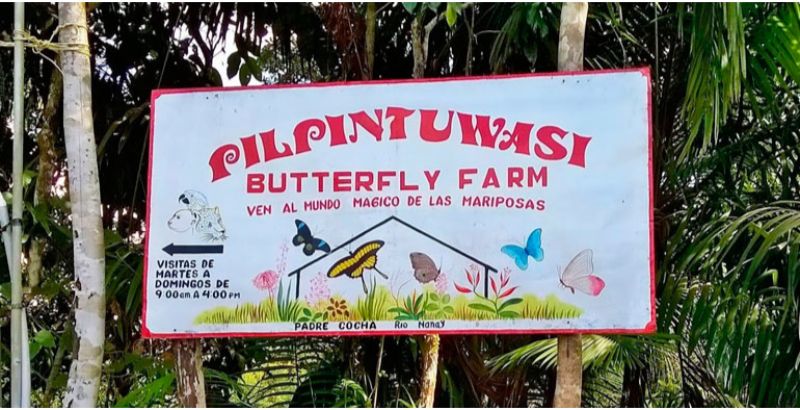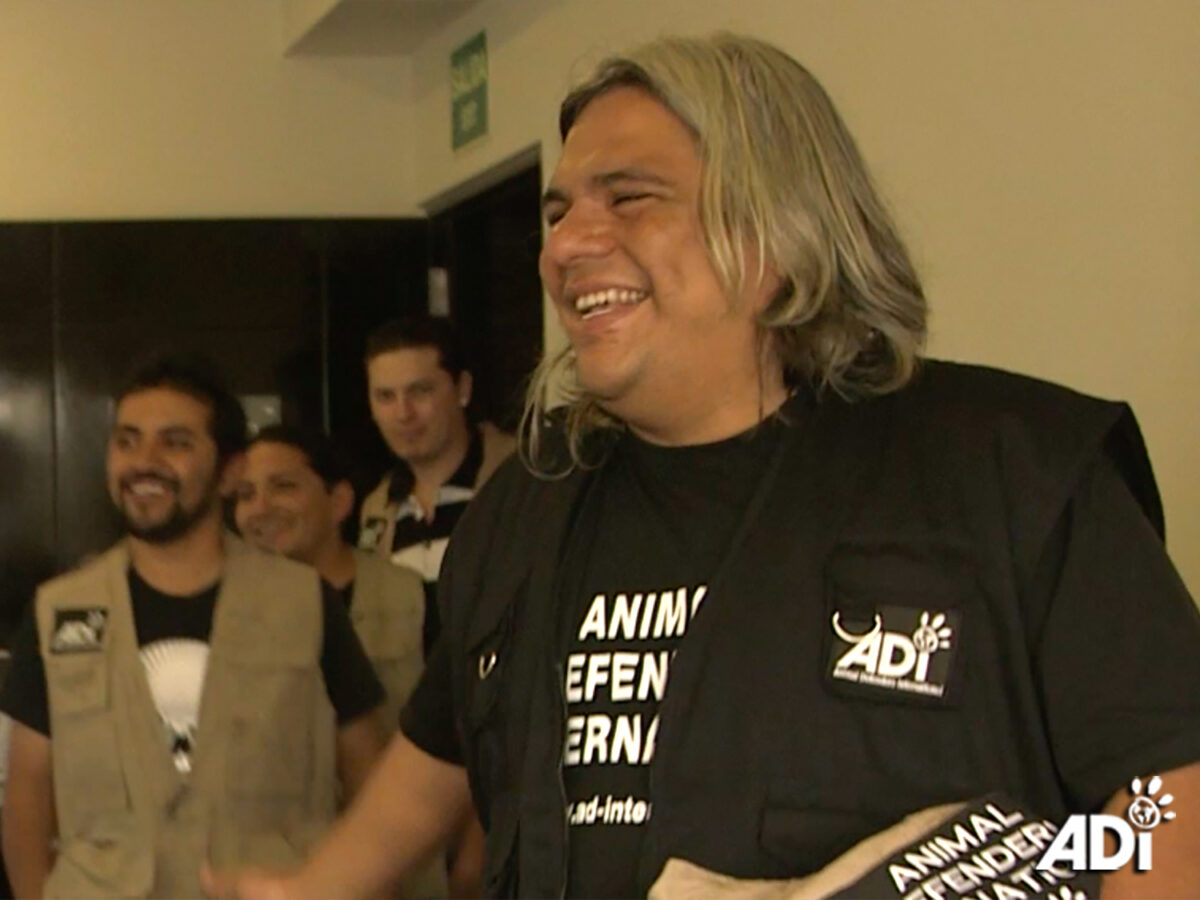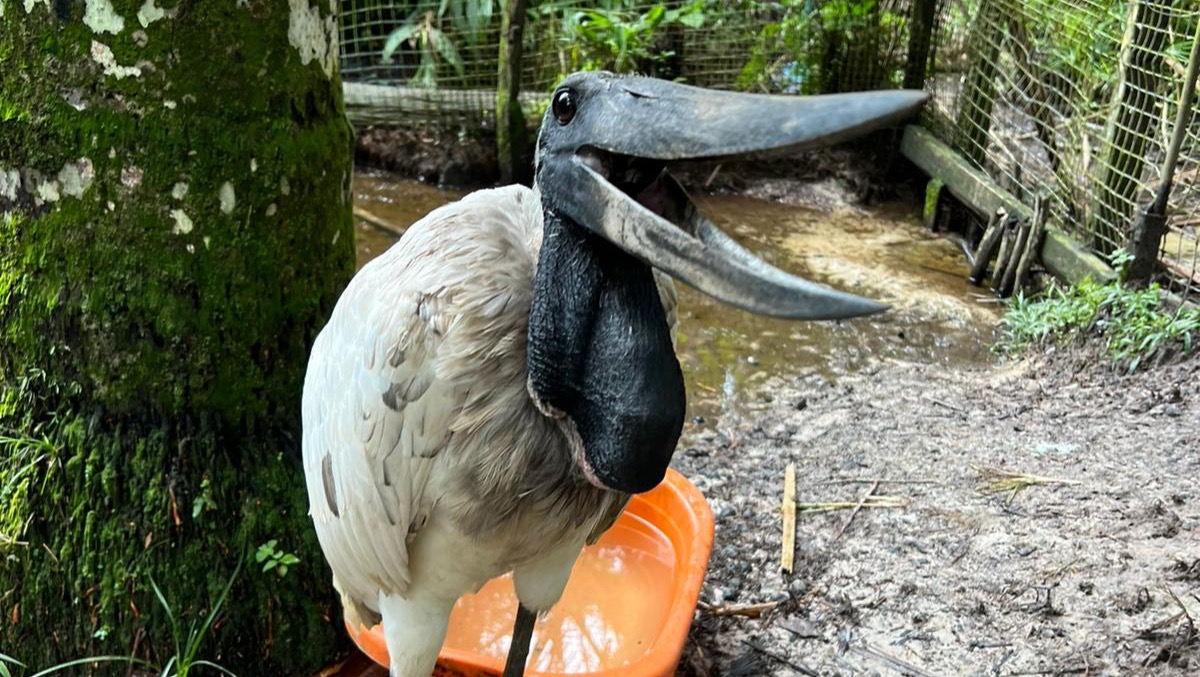(Español abajo) Pilpintuwasi is a non-profit organization dedicated to protecting animals affected by the illegal wildlife trade which today is one of the biggest businesses in the world. At Pilpintuwasi, we currently have about 20 species of animals, such as jaguars, ocelots, tapir, parrots, a toucan, and many different species of monkeys and butterflies. Before opening our doors to animals in need of refuge from the illegal wildlife trade we were solely are mariposario – a home for butterflies.
Pilpintu(wasi) is a Quechua word meaning butterfly (home). Gudrun Sperrer was founded in 1995 discovering host plants for butterflies. In 2002, she started a butterfly farm with the idea of conserving some of the thousands of Amazonian species. It is vital we persevere with these fluttering artworks as they are highly sensitive indicators of the rainforest environment’s health, in addition to playing crucial roles in pollinating plants – flowers & food.
They are more than just beauty for our eye, they are more than a pinned collection in someone’s house or to be turned into earrings – often products seen for sale here in Peru and globally on the market. Whole species disappear from the wild as millions of animals are illegally exported around the world in a business with profit margins that rival the drugs trade.
Some experts put the total number of butterfly species in Peru at an astonishing 3700, representing some 20% of the world’s known butterfly species. More species of butterfly have been reported in Peru than in the whole of sub-equatorial Africa. In South America, only Colombia, Ecuador, and Brazil come close to rivaling Peru’s extraordinary butterfly population. Incredibly, many scientists believe that butterfly species in Peru are under-recorded and that there may be as many as 4200 species in the nation’s biologically diverse natural areas.
The enormous variety of Peru’s butterfly population is due to the uniquely broad range of ecosystems found across the nation’s territory. However, these numbers are dramatically decreasing due to varying factors : trading (mostly dead butterflies) for collection purposes, touristic gifts (such as earrings and bracelets), habitat loss, and climate change. Butterflies worldwide are endangered due to the clear-cutting of forests and above all because of people’s ignorance about the life cycles of the plants they live on. People don’t know that each butterfly species lays its eggs on a specific type of plant. When we eliminate a plant, we also eliminate the possibility of an entire species reproducing.
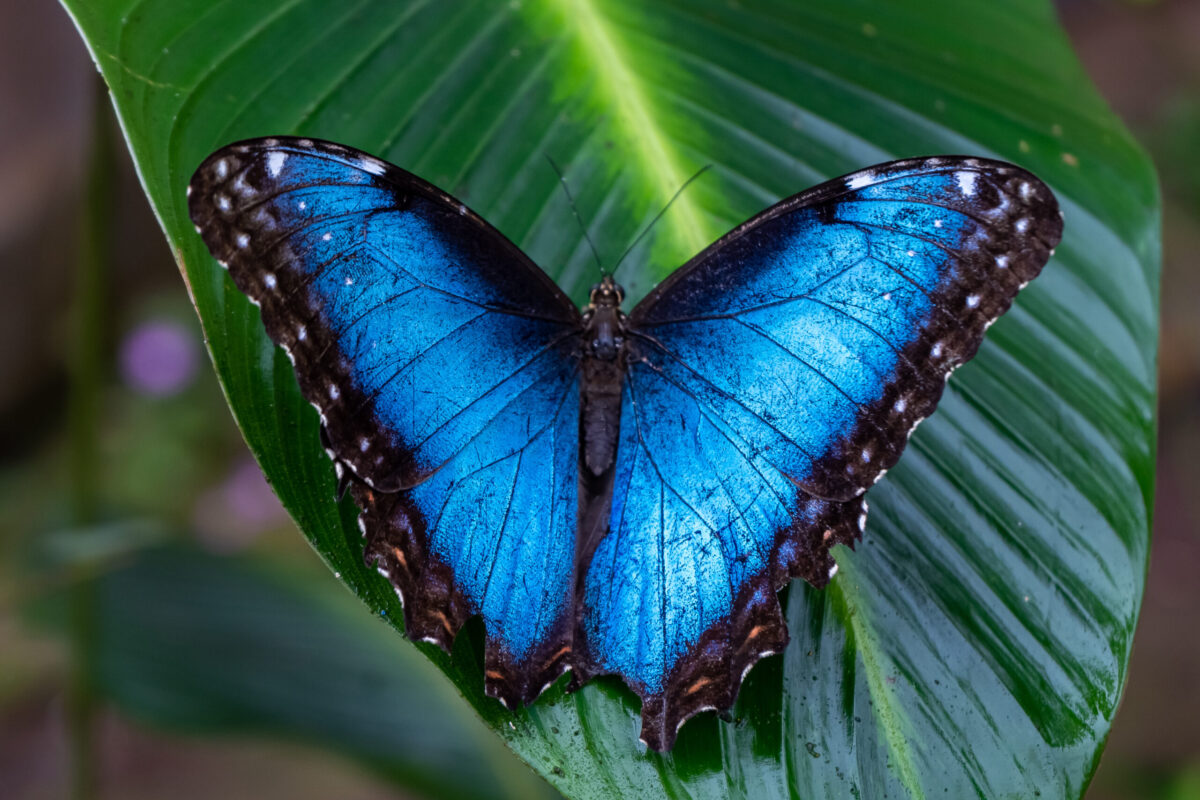
The iconic Blue Morphos are severely threatened, this is mainly by the deforestation of tropical forests and habitat fragmentation. Humans provide a direct threat to this spectacular creature because their beauty attracts artists and collectors from all over the globe who wish to capture and display them. Another propitiative butterfly species in Peru is the Giant Forest Owl Butterfly which is critically endangered – this is due to deforestation and unsuitable harvesting, several species of owl butterflies are considered endangered or extinct in the wild now. There are countless others facing the same fate and due to a lack of research and recording it is unknown exactly how many species are now lost or close to extinction in the wild.
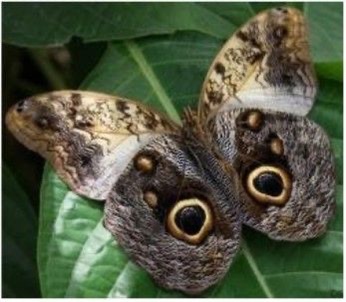
Pilpintuwasi has permits to breed several species that are then released back into the wild. We also help educate tourists on not supporting the trade of butterflies used in tourist gift attractions and teach school groups and young members of the communities about the butterfly life cycle. A lot of people close to the center and across the Amazonas are unaware that the caterpillar is at the stage of becoming a butterfly, and often fear them to due the primitive looks they have eg hairs of spines – that maybe they can be poisonous or harmful. Though it is presumed 1 out of 20 butterflies have the ability to cause mild irritations or affect the human skin. We hope to educate people on their hidden secrets and that they are not dangerous as perceived, to not kill them but admire them instead.
A convincing disguise transforms the hawk moth caterpillar into a small snake to ward off potential predators. When facing a potential threat, the hawk moth caterpillar takes the form of a pit viper. Many caterpillars have an appearance to deter other animals from eating them, through transformations, hairs, coloring, or scents.
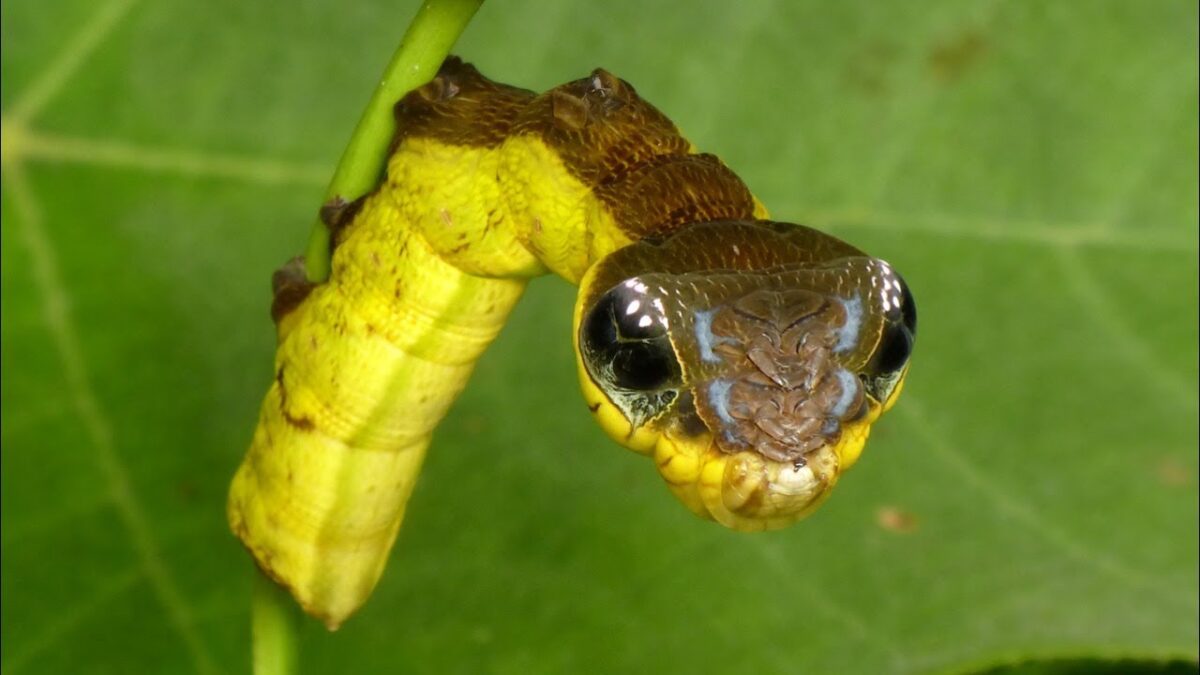
So through this post, it is hope that you see the importance of the work our Mariposarion does – that we serve as more than just a rescue center, and the work we do hopes to educate and re-wild. Many other butterfly farms are not sustainable in their practices, it is always okay to challenge people on what they do when it comes to wildlife – to research and understand the effects of purchasing butterflies ALIVE OR DEAD. To know where butterfly houses source their animals and if it helps the local environment.
Wishing all who read this well, love and light from Pilpintuwasi! <3
Pilpintuwasi es una organización sin ánimo de lucro dedicada a proteger a los animales afectados por el comercio ilegal de fauna salvaje, que hoy en día es uno de los mayores negocios del mundo. En Pilpintuwasi tenemos actualmente unas 20 especies de animales, como jaguares, ocelotes, tapires, loros, un tucán y muchas especies diferentes de monos y mariposas. Antes de abrir nuestras puertas a los animales que necesitan refugio del comercio ilegal de animales salvajes, éramos únicamente un mariposario, un hogar para mariposas.
Pilpintu(wasi) es una palabra quechua que significa mariposa (hogar). Gudrun Sperrer se fundó en 1995 descubriendo plantas hospederas para mariposas. En 2002 puso en marcha un mariposario con la idea de conservar algunas de las miles de especies amazónicas. Es vital que perseveremos con estas obras de arte revoloteantes, ya que son indicadores muy sensibles de la salud del entorno de la selva tropical, además de desempeñar papeles cruciales en la polinización de las plantas – flores y alimentos.
Son algo más que belleza para nuestros ojos, son algo más que una colección prendida en la casa de alguien o para ser convertida en pendientes – a menudo productos que se ven a la venta aquí en Perú y en el mercado mundial. Especies enteras desaparecen de la naturaleza a medida que millones de animales se exportan ilegalmente por todo el mundo en un negocio con márgenes de beneficio que rivalizan con el tráfico de drogas.
Según algunos expertos, el número total de especies de mariposas en Perú asciende a la asombrosa cifra de 3.700, lo que representa alrededor del 20% de las especies de mariposas conocidas en el mundo. En Perú se han registrado más especies de mariposas que en toda el África subecuatorial. En Sudamérica, sólo Colombia, Ecuador y Brasil se acercan a la extraordinaria población de mariposas de Perú. Increíblemente, muchos científicos creen que las especies de mariposas de Perú están infradeclaradas y que puede haber hasta 4.200 especies en las zonas naturales biológicamente diversas del país.
La enorme variedad de la población de mariposas de Perú se debe a la amplitud única de los ecosistemas que se encuentran en el territorio nacional. Sin embargo, su número está disminuyendo drásticamente debido a diversos factores: el comercio (sobre todo de mariposas muertas) con fines de recolección, los regalos turísticos (como pendientes y pulseras), la pérdida de hábitat y el cambio climático. Las mariposas de todo el mundo están en peligro debido a la tala de bosques y, sobre todo, a la ignorancia de la gente sobre los ciclos vitales de las plantas en las que viven. La gente no sabe que cada especie de mariposa pone sus huevos en un tipo específico de planta. Cuando eliminamos una planta, eliminamos también la posibilidad de que se reproduzca toda una especie.
Los emblemáticos Morfos azules están gravemente amenazados, principalmente por la deforestación de los bosques tropicales y la fragmentación de su hábitat. Los humanos suponen una amenaza directa para esta espectacular criatura porque su belleza atrae a artistas y coleccionistas de todo el mundo que desean capturarlas y exhibirlas. Otra especie de mariposa propicia en Perú es la mariposa búho gigante de los bosques, que se encuentra en peligro crítico de extinción – esto se debe a la deforestación y la recolección inadecuada, varias especies de mariposas búho se consideran en peligro o extintas en estado salvaje en la actualidad. Hay innumerables otras que corren la misma suerte y, debido a la falta de investigación y registro, se desconoce exactamente cuántas especies se han perdido o están a punto de extinguirse en estado salvaje.
Pilpintuwasi tiene permisos para criar varias especies que luego devuelve a su hábitat natural. También ayudamos a educar a los turistas para que no apoyen el comercio de mariposas utilizadas en atracciones turísticas de regalo y enseñamos a grupos escolares y miembros jóvenes de las comunidades el ciclo vital de las mariposas. Mucha gente cerca del centro y en todo el Amazonas no son conscientes de que la oruga está en la etapa de convertirse en una mariposa, y con frecuencia les temen debido a la apariencia primitiva que tienen por ejemplo pelos de espinas – que tal vez pueden ser venenosas o dañinas. Aunque se presume que 1 de cada 20 mariposas puede causar irritaciones leves o afectar a la piel humana. Esperamos educar a la gente sobre sus secretos ocultos y sobre el hecho de que no son tan peligrosas como se cree, para que no las maten, sino que las admiren”.
Un disfraz convincente transforma a la oruga de la polilla halcón en una pequeña serpiente para ahuyentar a posibles depredadores. Cuando se enfrenta a una amenaza potencial, la oruga de la polilla halcón adopta la forma de una víbora de fosetas. Muchas orugas tienen una apariencia para disuadir a otros animales de comérselas, mediante transformaciones, pelos, coloración u olores.
Así que a través de este post, es la esperanza de que usted vea la importancia de la labor de nuestro Mariposarion hace – que servimos como algo más que un centro de rescate, y el trabajo que hacemos espera educar y volver a la vida silvestre. Muchas otras granjas de mariposas no son sostenibles en sus prácticas, siempre está bien desafiar a la gente en lo que hacen cuando se trata de la vida silvestre – para investigar y comprender los efectos de la compra de mariposas VIVAS O MUERTAS. Saber de dónde obtienen sus animales las casas de mariposas y si eso ayuda al medio ambiente local.
Deseando a todos los que lean esto lo mejor, ¡amor y luz desde Pilpintuwasi! <3
